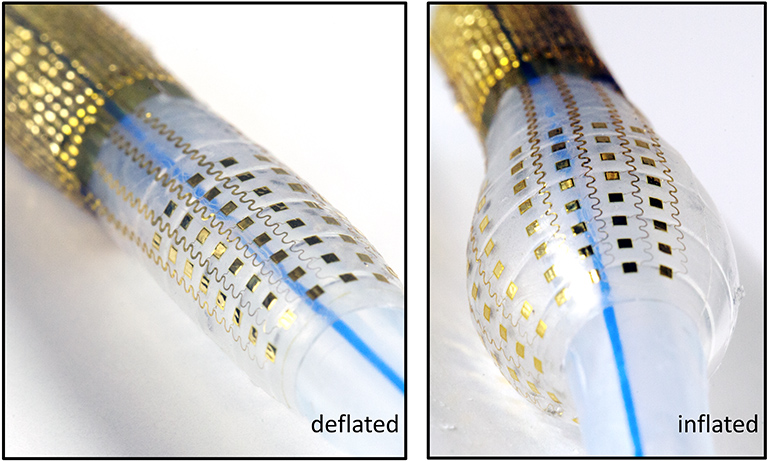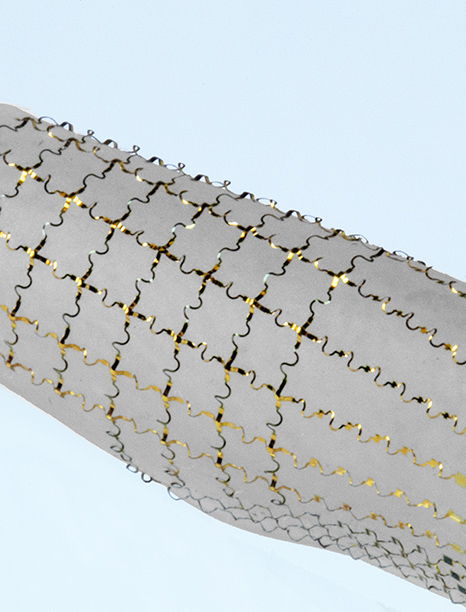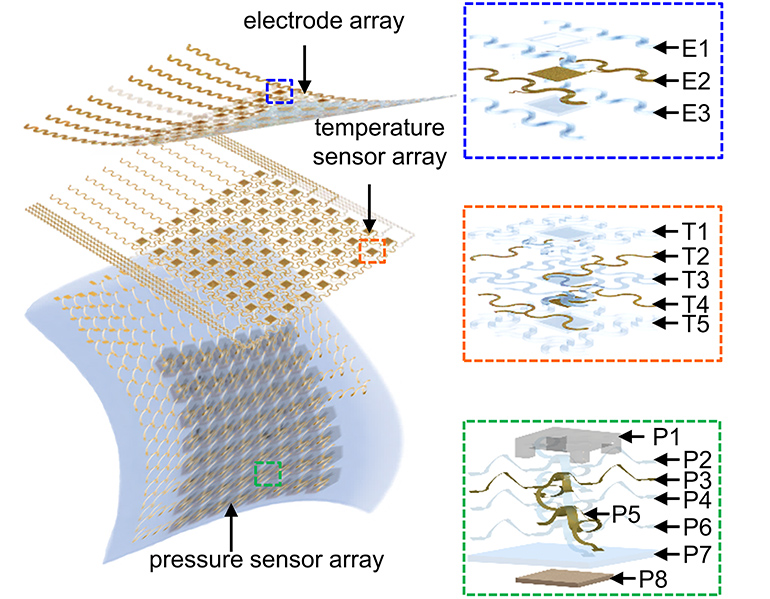
Researchers at George Washington University and Northwestern University have developed a new class of soft devices that can provide new functionality for catheters used in cardiac procedures. The new materials are soft electronics, including stretchable sensors and actuators, that when applied to the surface of a catheter system, could greatly assist in diagnosing and treating cardiac conditions.
Catheter-based therapy for conditions such as cardiac arrhythmias is well-established. However, current catheters are quite rigid and do not conform particularly well to the soft tissues in which they are used. This makes it difficult to assess and treat such tissues comprehensively and requires significant effort and time to move the catheter around during a procedure. Existing catheters can also perform only a limited number of functions, meaning that several different types of catheters may be required during the same procedure.

To address these issues, these researchers have developed a new type of catheter that conforms well with soft tissues, making it easier to access and treat cardiac conditions while significantly reducing the time required for each procedure. Moreover, the new catheter contains soft electronics, such as temperature and pressure sensors, that allow it to analyze the tissue around itself.
“We have taken new breakthrough materials and fabrication techniques typically employed by the semiconductor industry and applied them to the medical field, in this case cardiology, to advance a new class of medical instruments that will improve cardiac outcomes for patients and allow physicians to deliver better, safer and more patient-specific care,” said Igor Efimov, a researcher involved in the study.
Interestingly, these sensors allow clinicians to measure the electrophysiological parameters of the contacted tissue, something that is particularly useful in the heart. For example, the sensors could assist in locating tissue that is causing an arrhythmia.

“Hard, rigid catheters cannot conform to the heart because the heart itself is not hard and rigid. We leveraged our advances in soft, stretchable and flexible electronics to develop medical devices that include elastic, interconnected arrays of sensors and actuators, capable of gently and softly conforming to tissue surfaces,” said John A. Rogers, another researcher involved in the study. “The result improves the accuracy and precision of associated surgical processes, for faster, less risky and more effective treatments.”
Study in Nature Biomedical Engineering: Catheter-integrated soft multilayer electronic arrays for multiplexed sensing and actuation during cardiac surgery
Flashback: All-in-One Cardiac EP Mapping and Ablation Catheter Unveiled
Via: Northwestern
